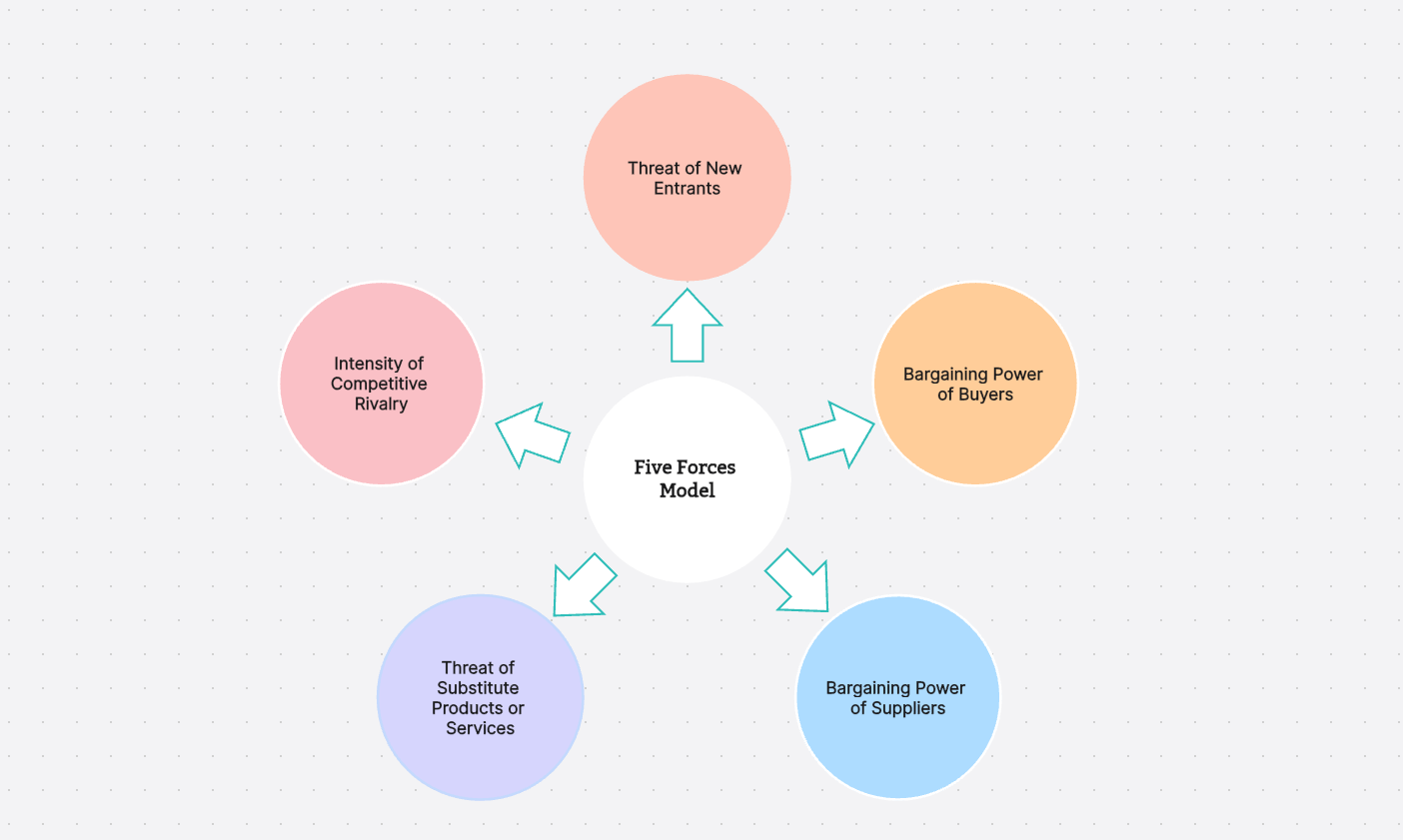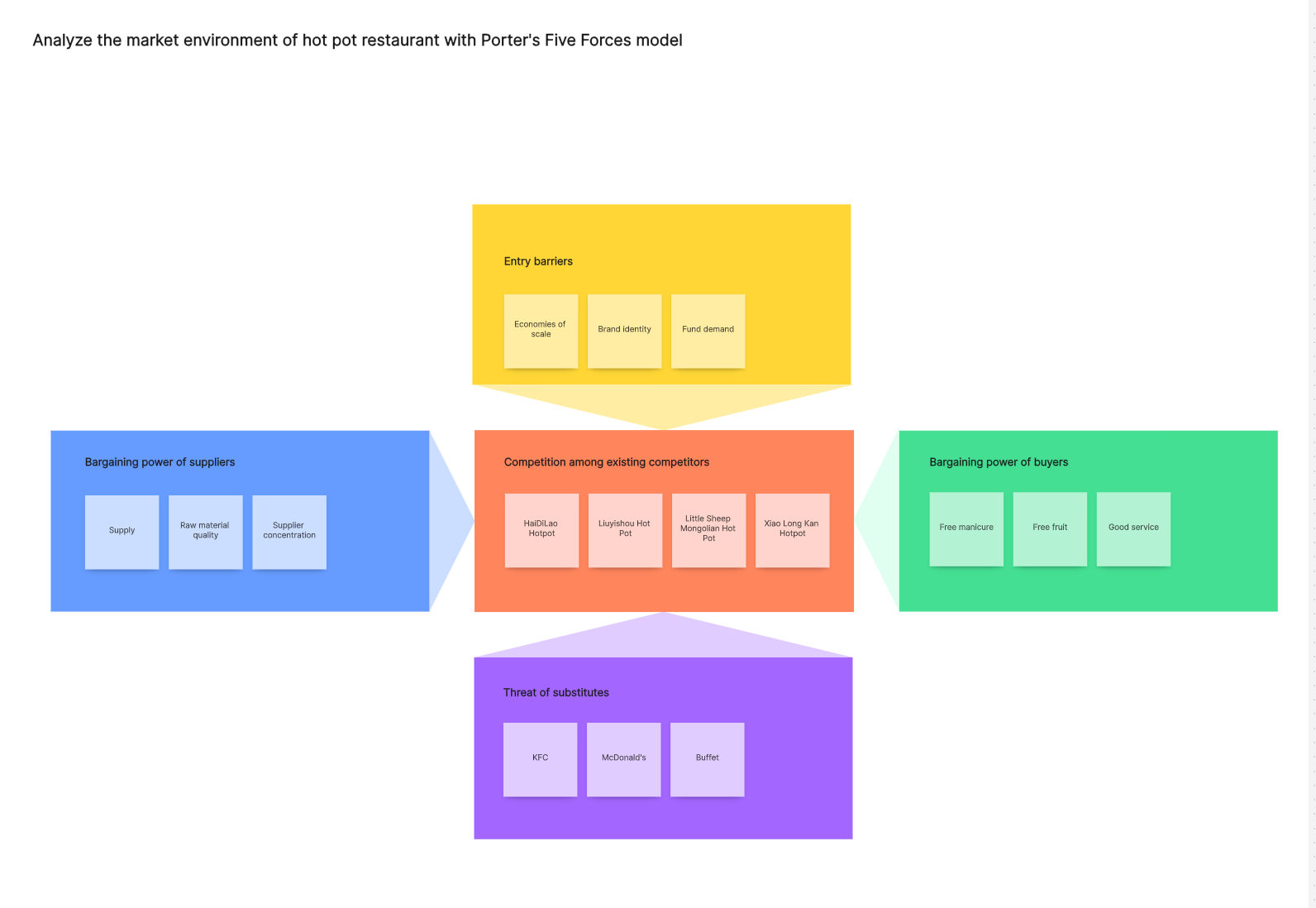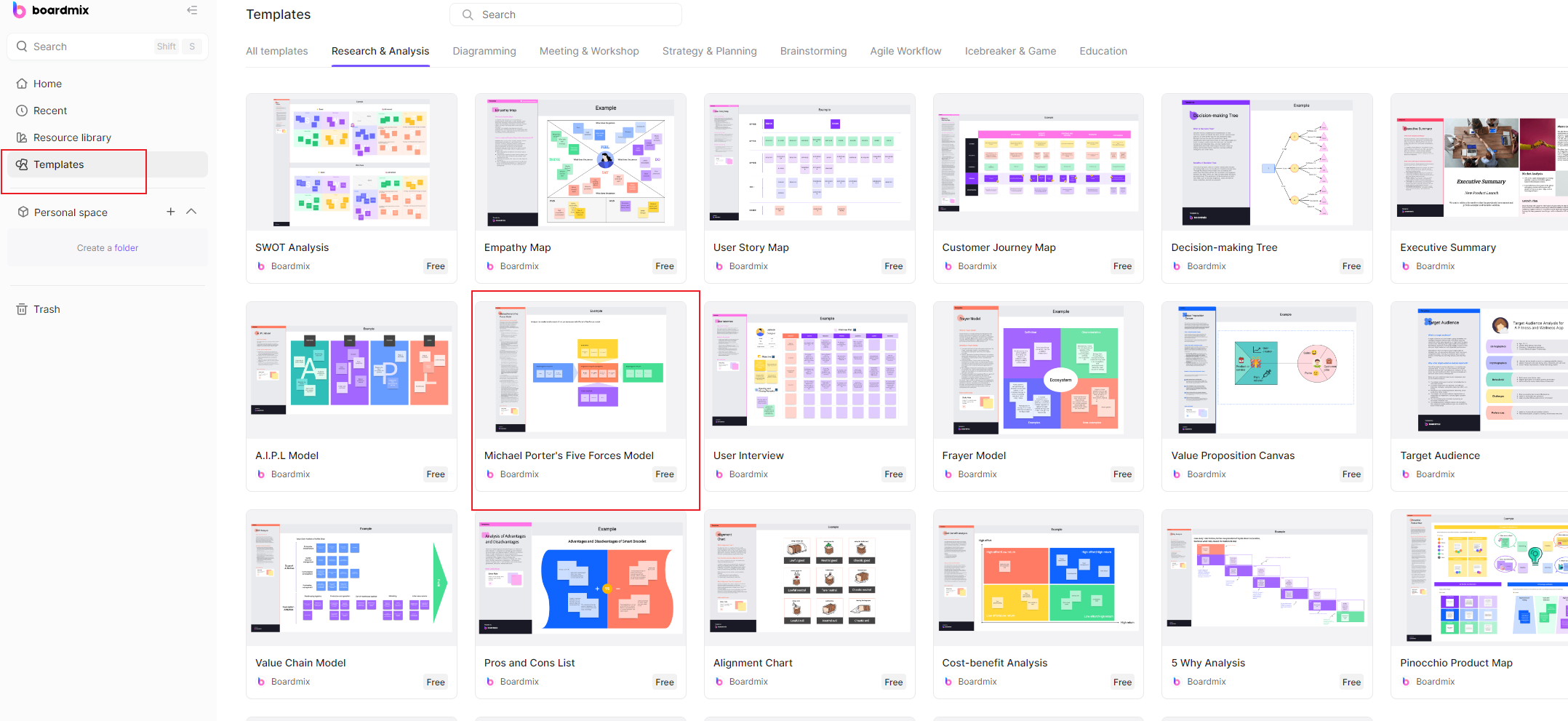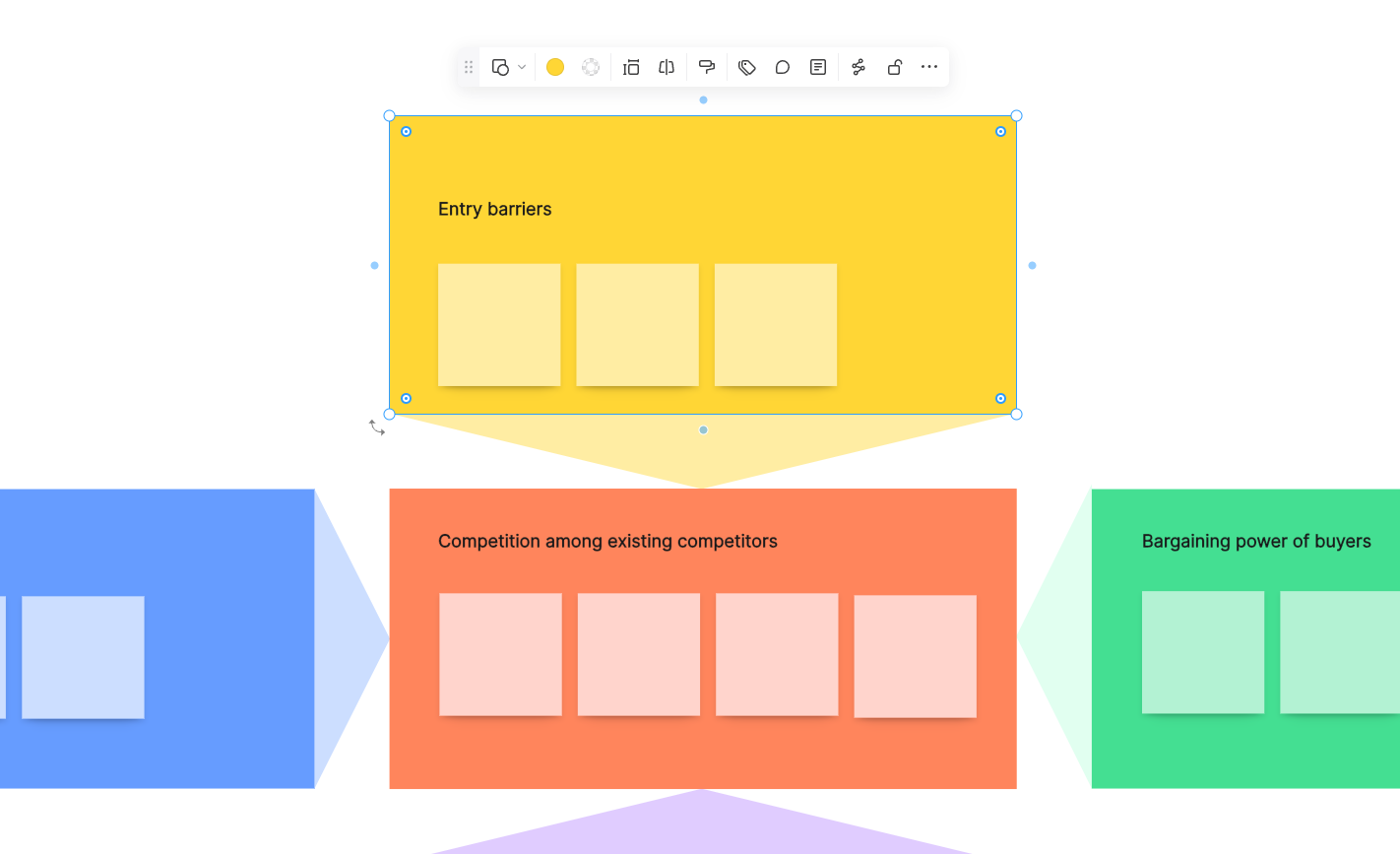Immerse yourself in the realm of strategic management through the lens of Michael Porter's Five Forces Model. This revolutionary analytical framework serves as a catalyst for businesses aiming to comprehend their industry landscape and devise robust competitive strategies. It provides a comprehensive perspective on market competition and profitability, enabling organizations to navigate their business environment effectively. Let's embark on an insightful journey to explore this model meticulously, unravel its components, and understand its profound impact on shaping business strategies.
Part 1. What Is Porter’s 5 Forces Model?
Porter's Five Forces, conceived by Michael E. Porter, a distinguished business strategist and esteemed professor at Harvard Business School, stands as a seminal framework in the realm of strategic management. Crafted to delve into the intricate dynamics of industries, this model serves as a robust analytical tool. Its primary objective is to illuminate the prevailing competitive forces that shape the landscape of a given industry, offering businesses profound insights into the intricate web of factors that underpin both competition and profitability. By systematically examining the interplay of these forces, enterprises can cultivate a nuanced understanding of their strategic environment, empowering them to make informed decisions and devise effective strategies to navigate the complexities of the market landscape. Porter's Five Forces remains a cornerstone in strategic thinking, guiding businesses across diverse sectors in their pursuit of sustainable competitive advantage.
Part 2. What Are the 5 Forces in Porter’s 5 Forces Model?
Porter's Five Forces Model identifies the following five forces that collectively shape the competitive environment within an industry:
- Threat of New Entrants: This force assesses the ease with which new companies can enter a particular industry. High barriers to entry, such as significant capital requirements, established brand loyalty, and complex regulatory hurdles, can deter new entrants.
- Bargaining Power of Buyers: The bargaining power of buyers examines the influence customers have on an industry. Buyers with high bargaining power can demand better prices or higher-quality products, potentially impacting the profitability of businesses within the industry.
- Bargaining Power of Suppliers: Suppliers' bargaining power evaluates the influence that suppliers hold over the industry. If suppliers have substantial power, they can dictate terms, raise prices, or control the availability of key resources, affecting the profitability of businesses in the industry.
- Threat of Substitute Products or Services: This force considers the availability of alternative products or services that could potentially replace those offered by businesses within the industry. The higher the threat of substitutes, the more challenging it becomes for businesses to maintain their market share and profitability.
- Intensity of Competitive Rivalry: This force gauges the level of competition among existing firms within the industry. Factors such as the number of competitors, industry growth rate, product differentiation, and exit barriers contribute to the intensity of competitive rivalry.
Together, these five forces provide a comprehensive framework for analyzing the competitive dynamics of an industry, helping businesses to strategically position themselves and make informed decisions to enhance their competitive advantage.
Part 3. What Are the Advantages and Disadvantages of Porter’s 5 Forces Model?
The model offers several benefits such as providing a comprehensive view of industry structure, aiding in strategic decision-making, identifying potential threats and opportunities. However, it also has limitations including its static nature that doesn't account for dynamic market changes and its focus on competition rather than collaboration. Below is more detailed discussion about pros and cons of Porter’s 5 force model:
Advantages of Porter's Five Forces Model:
- Comprehensive Analysis: The model provides a systematic and comprehensive framework for analyzing the competitive forces within an industry. It considers multiple aspects that influence the overall competitive environment.
- Strategic Insight: Businesses can gain valuable insights into their industry's dynamics, helping them understand the sources of competition and identify strategic opportunities or threats.
- Strategic Positioning: The model assists in strategic decision-making by helping businesses identify their competitive position within the industry and develop strategies to enhance their competitive advantage.
- Risk Assessment: By assessing the five forces, businesses can identify and evaluate potential risks, enabling them to proactively address challenges and minimize threats to their profitability.
- Tool for Long-Term Planning: Porter's Five Forces is useful for long-term strategic planning. It allows businesses to anticipate changes in the competitive landscape and adapt their strategies accordingly.
Disadvantages of Porter's Five Forces Model:
- Simplicity and Rigidity: Critics argue that the model may oversimplify the complexities of some industries. It might not adequately capture the dynamic and evolving nature of certain markets.
- Assumption of Independence: The model assumes that each force operates independently, but in reality, the forces often interact and influence each other. The interconnectedness of these forces may not be fully reflected in the model.
- Limited Focus on External Factors: While the model emphasizes industry-specific factors, it may not give sufficient attention to broader macroeconomic or global factors that can impact industries.
- Static Analysis: The model provides a snapshot of the industry at a specific point in time, but it may not be as effective in capturing the evolving nature of industries, especially in rapidly changing environments.
- Difficulty in Quantification: Some critics argue that the qualitative nature of the analysis makes it challenging to quantify and compare the forces objectively. This subjectivity may limit the model's precision and applicability.
Despite these criticisms, Porter's Five Forces Model remains a widely used and influential tool for strategic analysis, and its advantages often outweigh its limitations when used judiciously and in conjunction with other strategic frameworks.
Part 4. How to Use Porter’s 5 Force Model with Boardmix?
Boardmix is a cutting-edge online whiteboard platform, meticulously designed to enhance collaborative work sessions. It boasts an array of key features that set it apart, including a diverse range of drawing templates. These templates are not just mere tools for illustration but powerful aids to visualize and dissect intricate concepts such as Porter's Five Forces Model. With Boardmix, you can transform abstract ideas into tangible diagrams, fostering better understanding and effective communication among team members.
Here are steps on how you can use Boardmix with the Porter’s 5 force model:
1) Sign up or login to Boardmix.com and go to workspace.
2) From the Template center, choose Porter’s 5 Force Model template and click Use.
3) Identify your organization's key players. analyze each force and write down all these on Boardmix.
FAQs about Porter’s 5 Force Model
1. What is the difference between SWOT analysis and Porter 5 model?
The SWOT analysis focuses on internal factors (strengths & weaknesses) and external factors (opportunities & threats), while Porter's model examines five forces that shape an industry.
2. What is competitive rivalry in Porter's five forces?
Competitive rivalry refers to competition between organizations offering similar products or services within the same sector. It is a dynamic and complex force that shapes the competitive landscape, influencing pricing, quality, innovation, and marketing strategies. The degree of this rivalry often determines an industry's attractiveness and profitability, making it a vital aspect to consider in strategic planning.
3. Is Porter's 5 Forces macro or micro?
While both macroeconomic factors (like new laws or economic trends) and microeconomic factors (like buyer behavior or supplier power) can influence the forces, Porter's model primarily focuses on micro-level industry conditions.
Conclusion
By gaining a profound understanding of these elements, you'll be empowered to utilize Boardmix to its full potential for your strategic planning endeavors. The fusion of Porter's Five Forces Model with Boardmix's innovative features paves the way for insightful analysis and robust strategy formulation. It's not just about comprehending the forces at play; it's about leveraging this knowledge to navigate your business landscape effectively using Boardmix. Embrace this synergy of strategic management theory and cutting-edge technology to drive your organization towards success!













